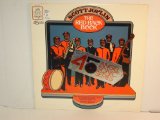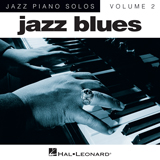Jazz Sheet Music
Printable PDF Digital Notes
Why Should One Purchase Jazz Sheet Music With Us? Read This...
If you are looking for high-quality licensed Jazz sheet music to play and practice on your instrument then you are on the right page.
Scores from Elvis Presley, Niehouse, Frank Sinatra, John Coltrane, Charlie Parker are at the reach of your hands.
We provide licensed digital music notes of not only most popular, but classical, jazz, blues, movie/soundtrack compositions as well. Currently we have over 300,000 of digital scores in our store.
Why choose Jazz sheet music in our store? It’s quite easy: one of the most liked features our customers like and benefit is interactive sheet music viewer which alows them to playback and transpose their purchased music notes (not all can be transposed or playdback though, but vast majority can).
This means that our users, beginner as well as seasoned musicians, teachers, professors, professional artists and complete amateurs, can learn their desired score in less time. And as we all who play music know that time is very important.
When purchasing Jazz sheet music one should also be careful about security in terms of online payments.
FreshSheetMusic.com is proud to say that we are using the highest security standards, working with Braintree (PayPal co.) in terms of credit cards and PayPal. We also use secure SSL when transfering data. So, to make a long story short, it’s worth trying our licensed digital music notes and scores when embarking onto new adventures. Welcome!
introduction into Jazz Music
Jazz is a type of music that originated around 1900 in the southern United States and was primarily produced by African-American musicians.
It was developed in a variety of ways, often in crossover with other musical traditions and genres. In the meantime, forms of music are also counted among jazz, which are often only loosely or hardly connected to the African American tradition.
With regard to its artistic significance, jazz is often understood as an American counterpart to classical European music. In addition, he has opened up almost all other branches of music, from pop to folk.
Hallmarks of jazz Jazz uses a predominantly European sound system and uses European melody and harmony, musical forms (for example song form), as well as European instruments (wind instruments, piano, guitar, double bass, bass and bass drum, cymbals). These components from Europe are used in jazz in their own way.
Central to this is a special rhythm based on movement (swing, groove), intensive, improvisational and spontaneous interaction (including call and response) and sound formation based on vocal expression.
These elements, especially the rhythm, can be traced back to the musical perception of African music cultures.
Main article: Jazz harmony and jazz rhythm
The newer trends in jazz also have individual musical and aesthetic characteristics that make them recognizable as jazz. Above all, these characteristics include the blue notes, but also:
- Improvisation,
- Jazz rhythm with (at least a tendency) polyrhythmic character, for example through the offbeat,
- a special type of tone formation (e.g. grinding tones and multiphonics) and instrument treatment,
- stylistic individuality of individual musicians and
- a traditional reference to previous styles in jazz history.
Jazz emerged from a process of merging elements of Afro-American folk music (blues, works song, negro spiritual) and European-American marching, dancing and popular music.
The history of jazz is "first and foremost a history of individual and collective styles, improvisation strategies, phrasing and intonation modes, in short: an interpretation story."
But this also means that jazz does not exist (anymore) - in the course In the history of jazz it is becoming increasingly difficult to agree on a uniform definition of this term and to define jazz music solely on the basis of its musical design tools.













![Download or print Fats Waller Ain't Misbehavin' [Stride version] (arr. Brent Edstrom) Sheet Music Printable PDF 4-page score for Blues / arranged Piano Solo SKU: 159244](https://freshsheetmusic.com/media/catalog/product/f/a/fats-waller-aint-misbehavin-stride-version-arr-brent-edstrom-sheet-music-small_image.jpg)









